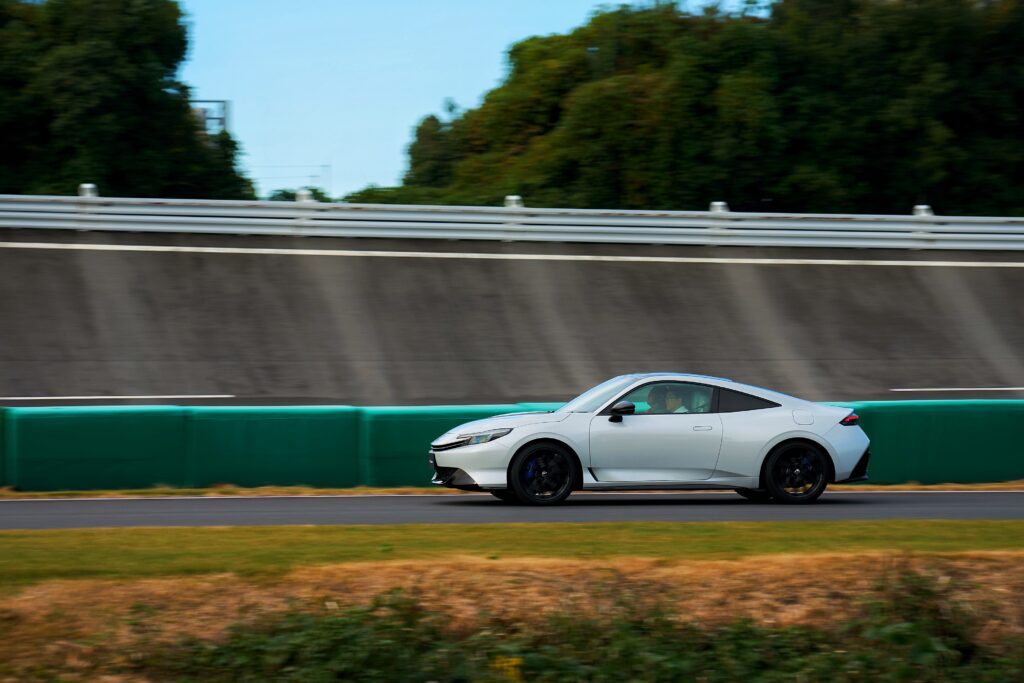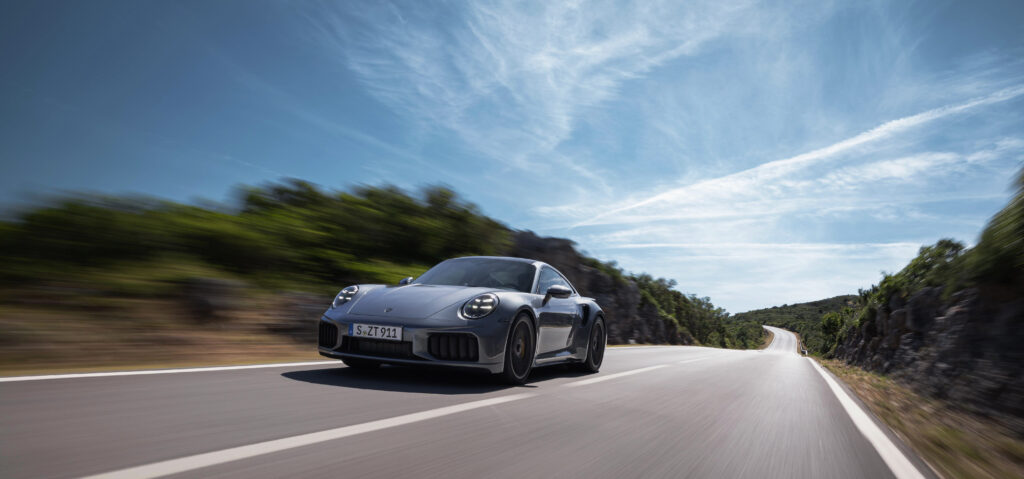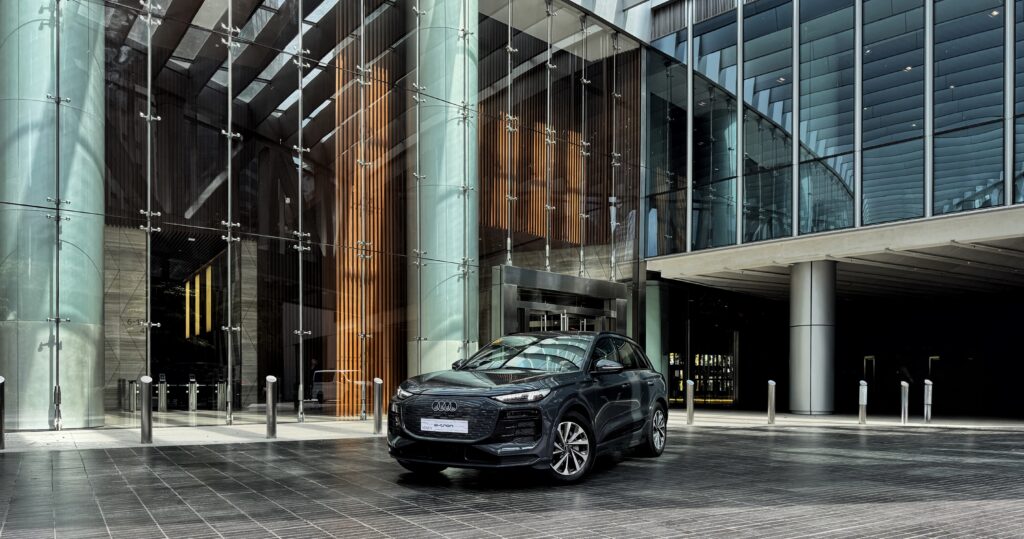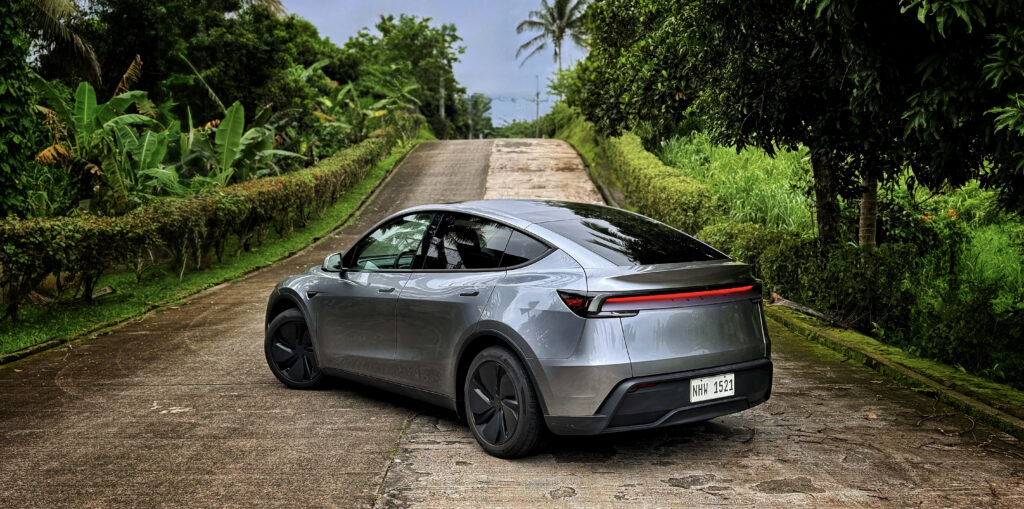Honda’s latest sixth generation Prelude was inspired by a glider soaring effortlessness, peacefully and serenely in the skies. Unimpeded, uninterrupted, ebbing and flowing through the heavens, at one with the universe. This is the driving experience envisioned for Honda’s latest GT.
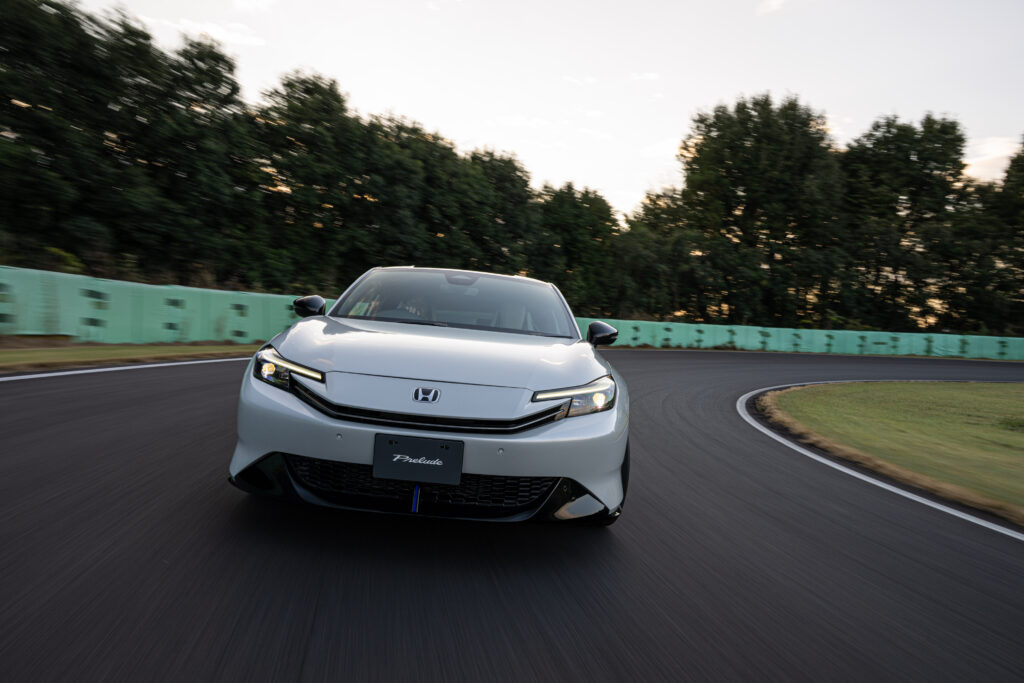
So says the Prelude’s Large Product Leader, Tomoyuki Yamagami. Fast but not furious.
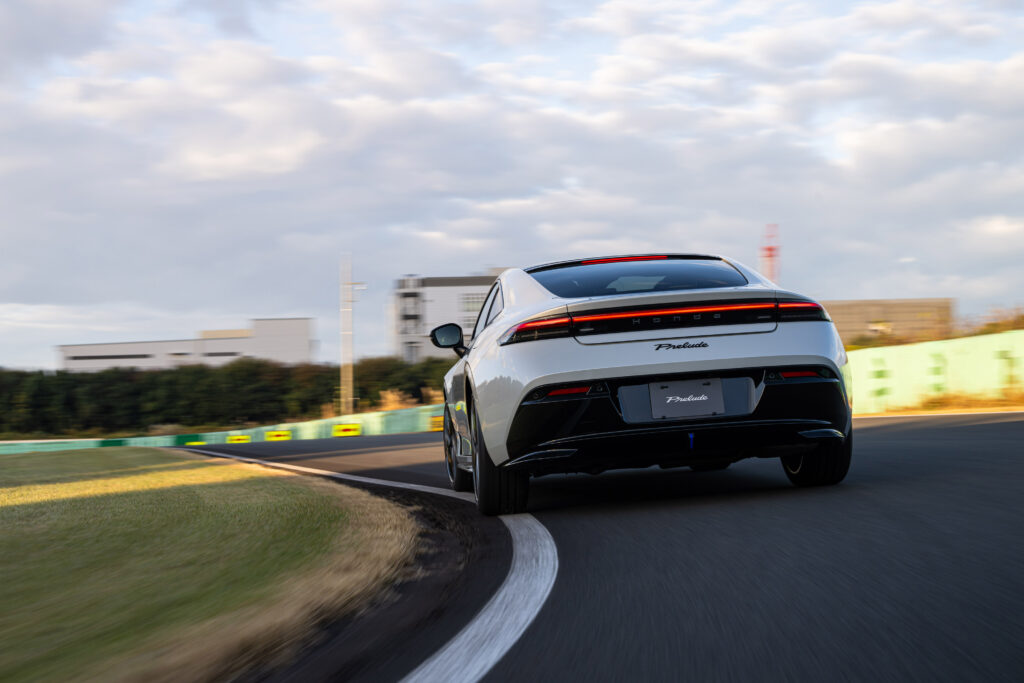
The Prelude isn’t intended to be a pure sports car; it won’t be a direct sparring partner for Honda’s Civic Type-R, nor does Honda plan to introduce a Type-R variant for the Prelude. But Honda does plan to increase its sporty line-up, faithful to the brand’s core DNA of driving performance and pleasure. The latest Prelude which comes 25 years after the previous model’s production ended, is what the brand considers a mainstream sports model. Its goal is to deliver a more mature, more sophisticated and more luxurious, yet still involving driving experience. And Honda promises that the Prelude is the first of many more to come bearing the same sporting DNA Honda is known for.
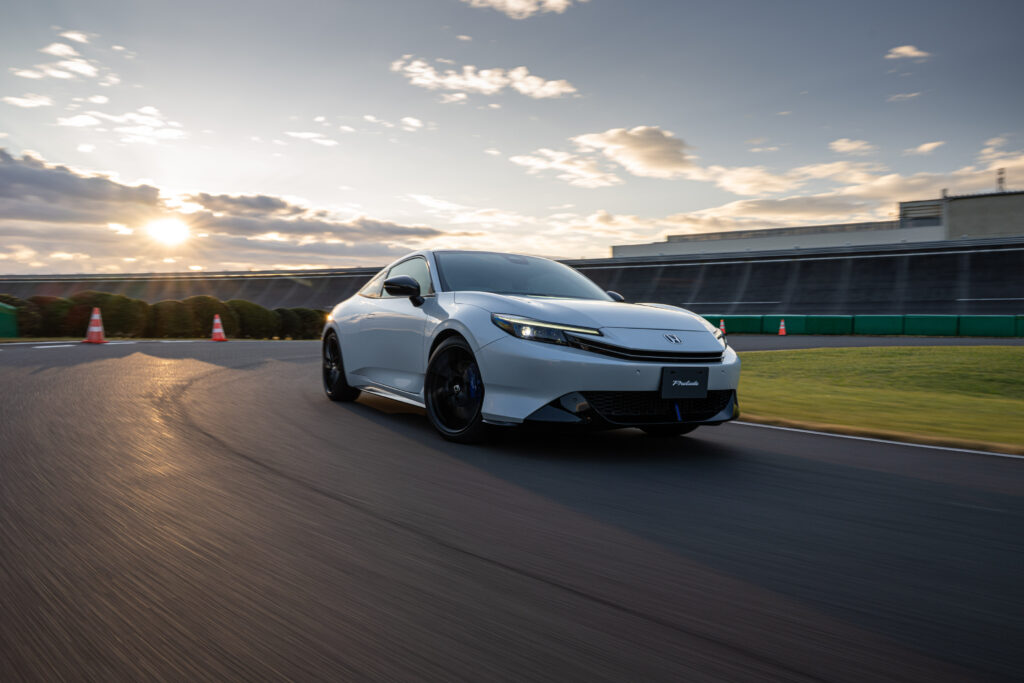
Powering the latest Honda Prelude is a two-motor hybrid-electric powertrain, similar to the Civic Hybrid. This combines a 2.0-liter Atkinson-cycle 4-cylinder gasoline engine with an electric traction motor and a generator. A combined system output of 200 horsepower and around 315 Newton-Meters of torque is delivered to the front wheels through a gear-less direct-drive system.
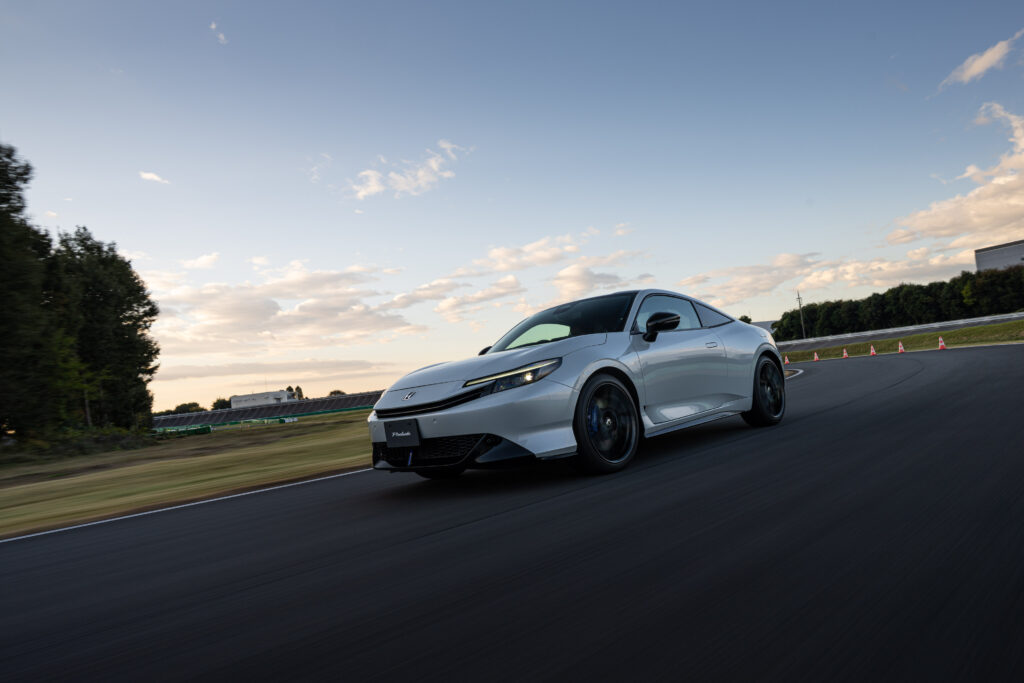
The engine will mostly power-up to charge the battery which powers the electric motor to propel the Prelude; at higher speeds however, the direct-drive system’s clutch locks up to the engine, providing full propulsion from the gasoline engine. The Prelude can also function as a pure electric vehicle albeit in very limited range owing to its miniscule 1.05kwh lithium-ion battery.

To enhance the driving experience, the system includes a simulated feel of a traditional transmission which Honda engineers have dubbed “Honda S+ Shift” for virtual gear changes and rev-matched downshifts.

This system makes its first appearance with the Prelude and will find its way into all future Honda hybrids and fully-electric vehicles.
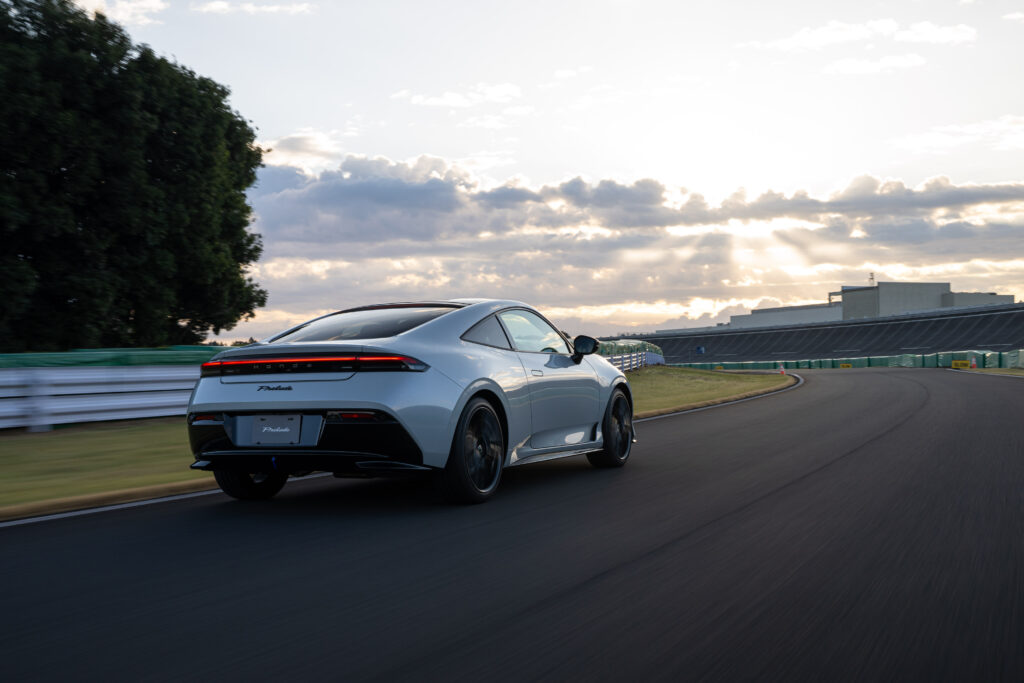
The direct-drive transmission can torque-dip while accelerating to give a sense of a transmission shift; S+ Shift mode will specifically simulate an eight-speed automatic transmission’s up- and downshifts by pairing those dips to rev-matching via paddle “shifters.”
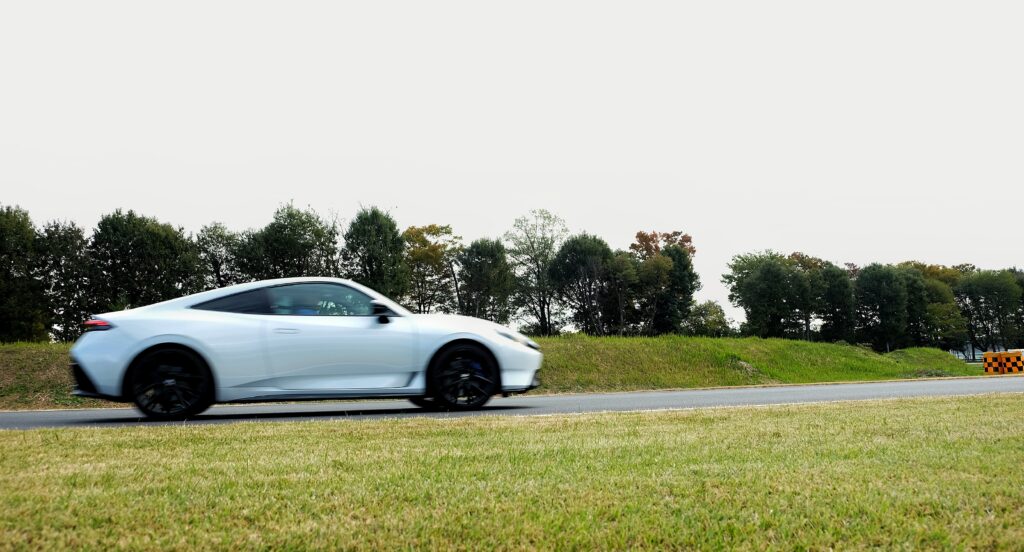
It sounds cringey but on the Tochigi Proving Ground’s winding and abruptly undulating handling track, combined with fast and flowing decreasing radius corners, the simulated rev-matching helps immensely as it wires your brain to floor the throttle smoothly, allowing you to pull through the corners and uphill ascent with ease and confidence. It also helps provide a more connected, engaging and crucially, organic driving experience.
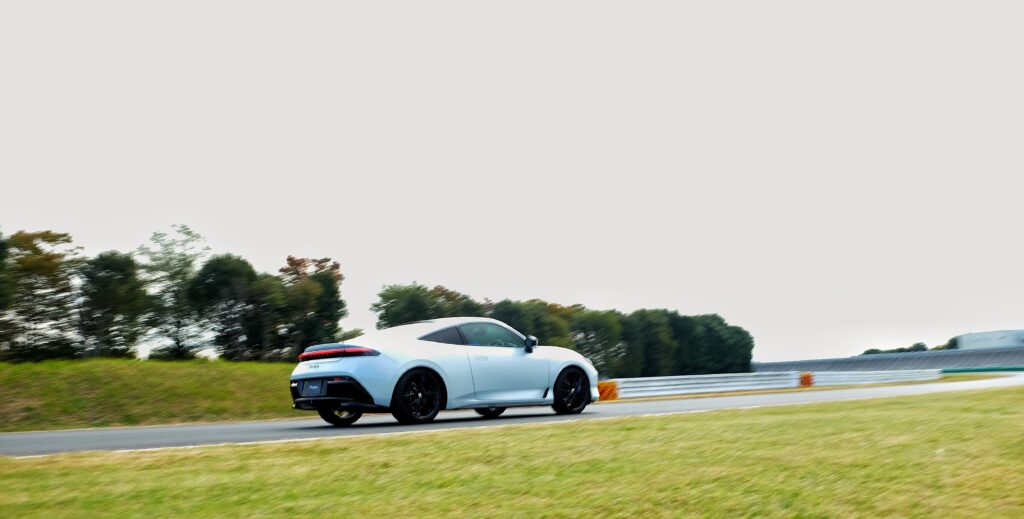
The Prelude, which is based on the Civic chassis albeit running a shorter wheelbase uses components from the FL5 Civic Type-R, including dual-axis front struts to improve handling and reduce torque steer. Previous Prelude generations were based on the larger Accord platform.
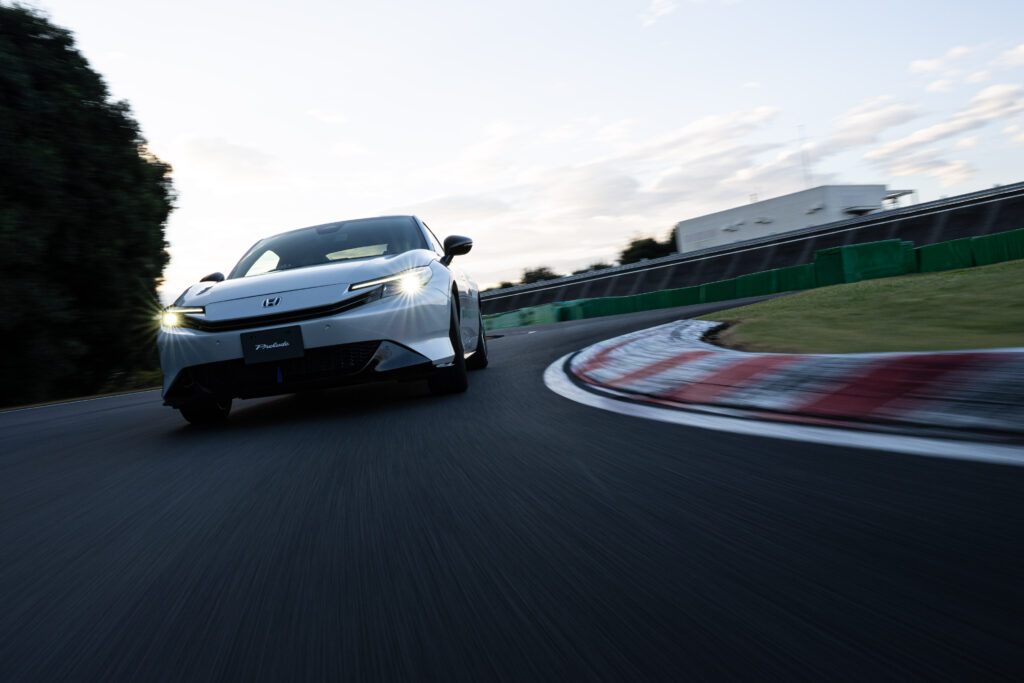
The other big news? Honda’s revolutionary front end. Engineers at the Honda Auto Tech Workshop we attended at the Tochigi Proving Ground presentation prior to the drive referred to it as Honda’s front motion control: essentially an engineered chassis flex of the front suspension crossmember and part of the engine bay strut mounts that resists front chassis movement while cornering.

Imagine this: The faster and harder a vehicle turns into a corner, the entire vehicle is pushed outward of the apex. The front-end suspension resists this movement by flexing a minuscule amount, naturally being pushed into or towards the apex of the corner by the outer front suspension.
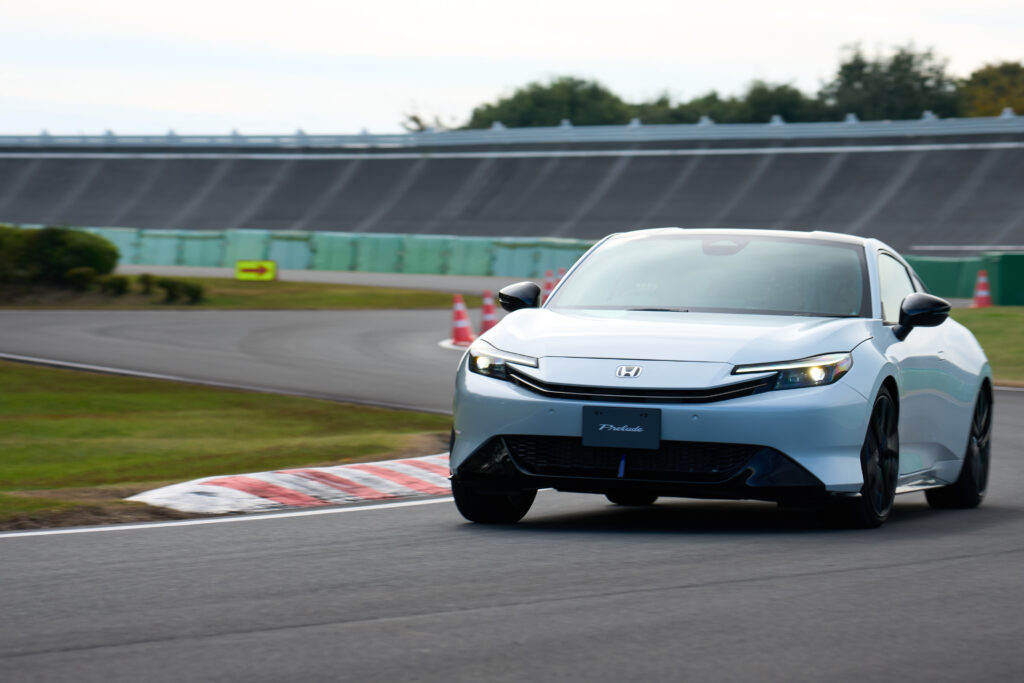
This allows the outer front tires to maintain greater contact to the road and thus accelerate faster into, through and out of the corner. Traditional engineering would install harder front suspension and more chassis bracing to eliminate the twist and help keep the tires in contact to the ground.
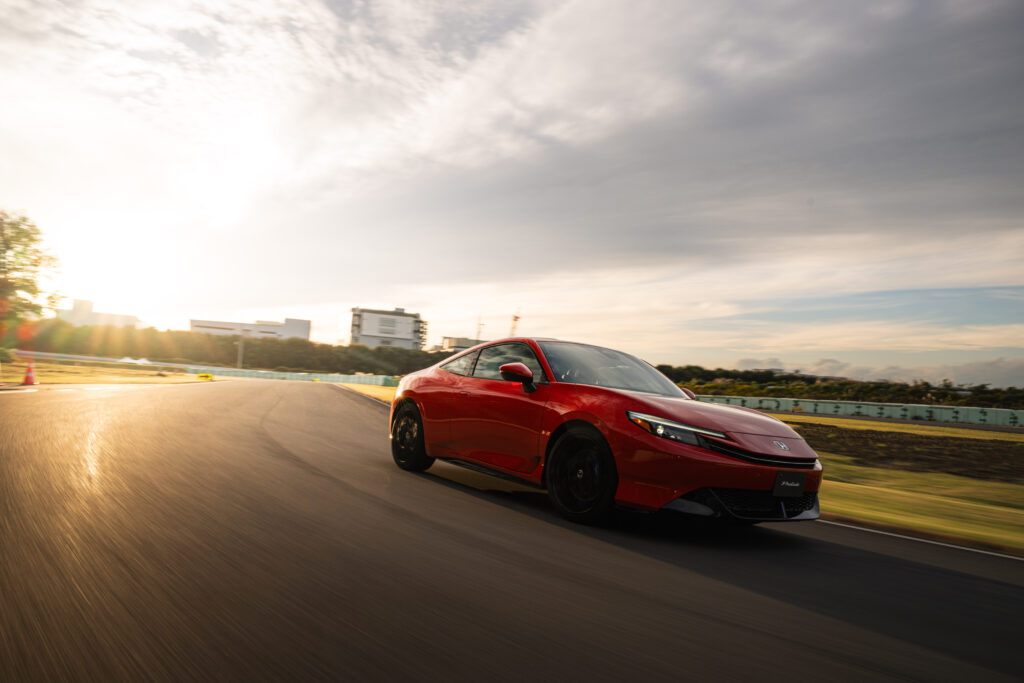
The trade-off using traditional methods is an unresponsive front-end with a hint of understeer at corner entry. There is added effort to point the car in the intended direction. Hence, the feeling of freedom of motion is lost.

The front motion control system allowed Honda to reduce stiffening material in the front of the chassis, reducing bare chassis weight by as much as 10% and the ability to run a softer front suspension which allows the Prelude to feel more intuitive on steering, improve turn-in feel and allow for more intuitive and natural weight transfer as well, increasing the sense of connection between car and driver. You can feed the throttle sooner through the apex and the Prelude feels a whole lot more stable. The Prelude feels truly stellar, potentially elevating the game for front-wheel-drive vehicle dynamics.

Honda boffins say they could have utilized a front limited-slip differential and / or torque-vectoring by braking the inner wheels, but it would have felt less natural, diminishing the gliding sensation Honda was aiming for. Honda used a Porsche 718 Boxster / Cayman platform as a baseline reference to hone the Prelude’s handling, and they are proud that the front drive coupe delivers on the goods.

Rolling stock consists of 19×8 inch wheels shod with 235/40R19 tires. The fronts utilize sizeable 350mm brake discs clamped down by 4-piston Brembo calipers painted blue, the same brakes also fitted on the Civic Type-R.
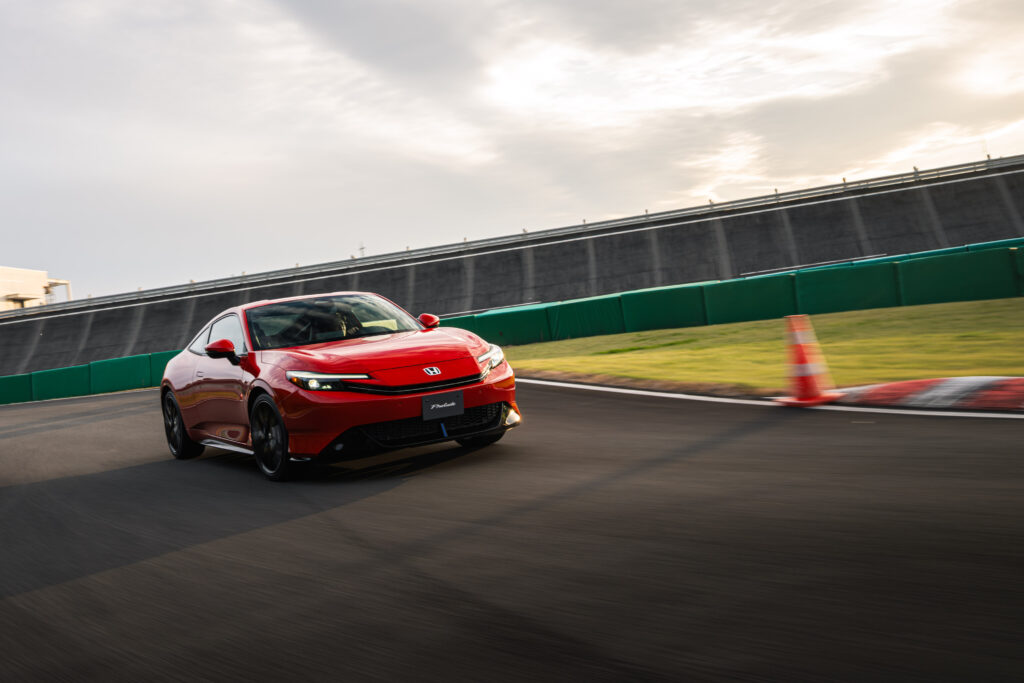
As with any Honda, the driving position is absolutely spot-on, the interior, though very much Honda-fare, is well-built, with controls laid-out logically, a good deal of physical buttons available. The seats are supremely comfortable even for my XXL sized frame yet provide good lateral support for excitable driving experiences.

This drive was by no means definitive, but it gives a very positive, very promising and very exciting indication of Honda’s future plans to make its entire vehicle range much more exciting and involving.
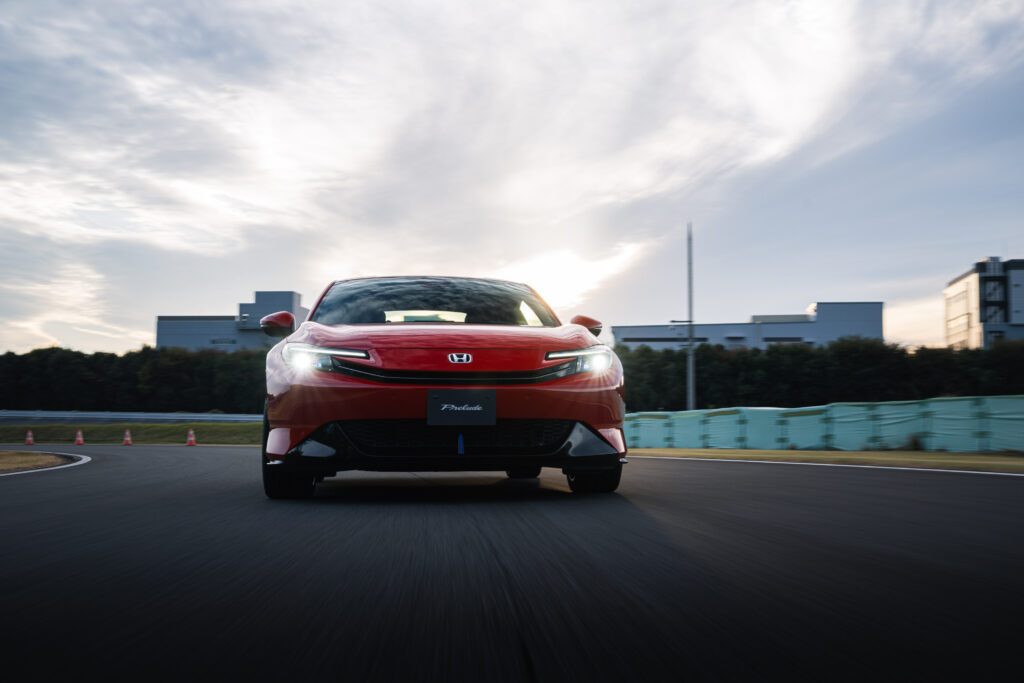
A proper long-drive up north or down south with winding roads would reveal more, plus traversing real-world roads and driving conditions will reveal the Prelude’s entire repertoire of skills and strengths. Here’s hoping we drive it on local roads soon!
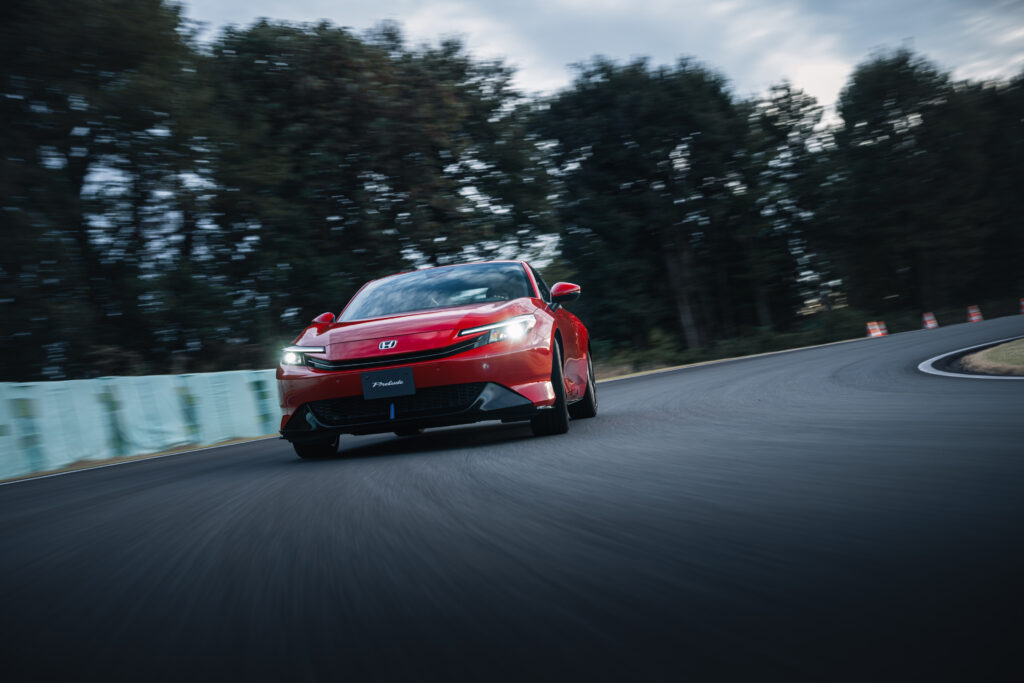
Honda Cars Philippines has confirmed it will arrive on our local shores within the first half of 2026, but when we probed deeper, it seems possible that we can get it by the tail-end of Q1. The price? In Japan, the Prelude sells for 6 Million ¥en, which translates to around 2.4 Million Pesos. But Honda executives feel it will realistically be priced higher, with the goal being high 2 millions to low 3 millions after taxes and factoring our current exchange rates.
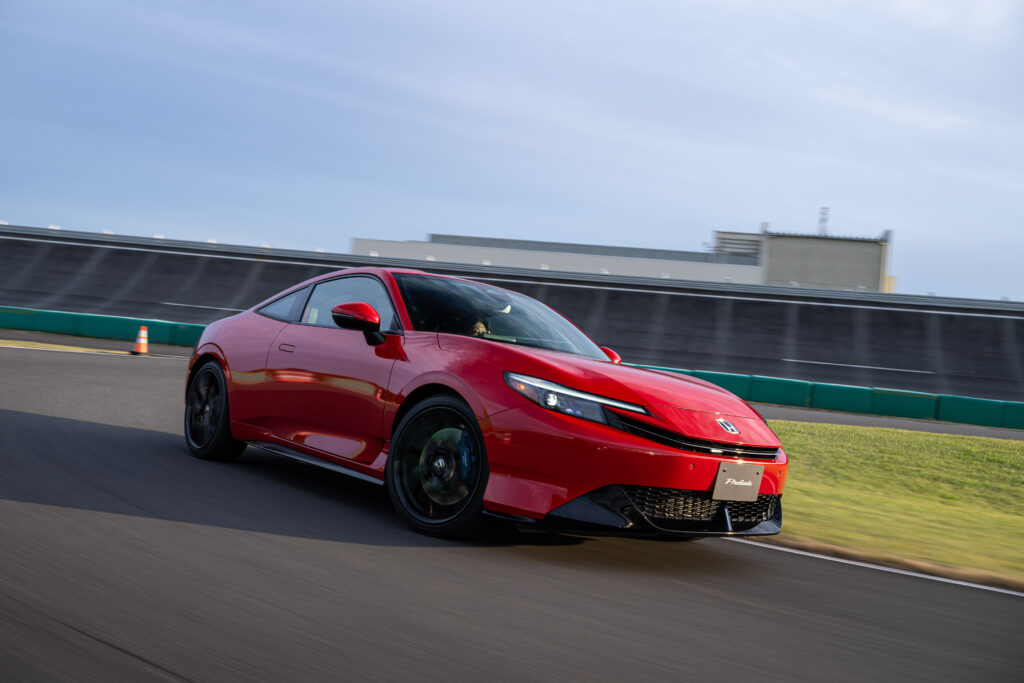
The future looks exciting for Honda once again.

